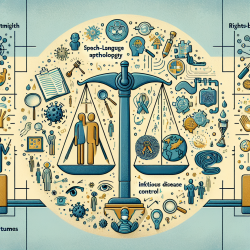Introduction
Adverse Childhood Experiences (ACEs) have long been associated with various negative outcomes in adulthood, including mental health issues and addictive behaviors. A recent study, "Associations between adverse childhood experiences and early adolescent problematic screen use in the United States," sheds light on how ACEs influence problematic screen use among adolescents. This blog post aims to help practitioners understand these associations and encourage further research and intervention development.
The Study and Its Findings
The study analyzed data from the Adolescent Brain Cognitive Development Study, focusing on 9,673 adolescents aged 11-12 years. The research found that adolescents exposed to four or more ACEs had significantly higher odds of problematic video game and mobile phone use. Specifically, these adolescents were 3.1 times more likely to report problematic video game use and 1.6 times more likely to report problematic mobile phone use compared to peers with no ACEs.
Interestingly, while problematic social media use was initially associated with ACEs in unadjusted models, this association did not hold in adjusted models. This suggests that other factors may mediate the relationship between ACEs and social media use.
Implications for Practitioners
For practitioners working with children, these findings highlight the importance of considering ACEs when addressing screen use behaviors. Here are some actionable steps practitioners can take:
- Screen for ACEs: Incorporate ACEs screening into routine assessments to identify children at higher risk for problematic screen use.
- Develop Interventions: Create interventions that address both the emotional impact of ACEs and promote healthy digital habits.
- Collaborate with Families: Work with families to develop media use plans that set boundaries and encourage balanced screen time.
- Educate Schools: Advocate for school-based programs that teach students about healthy digital habits and the potential impact of ACEs.
Encouraging Further Research
While this study provides valuable insights, it also opens the door for further research. Future studies could explore:
- The role of protective factors that mitigate the impact of ACEs on screen use.
- The effectiveness of specific interventions in reducing problematic screen use among ACE-exposed adolescents.
- Longitudinal impacts of ACEs on screen use patterns and related outcomes in older adolescents and young adults.
Conclusion
The association between ACEs and problematic screen use underscores the need for targeted interventions that address both trauma and digital habits. By understanding these relationships, practitioners can better support children in developing healthier relationships with technology.
To read the original research paper, please follow this link: Associations between adverse childhood experiences and early adolescent problematic screen use in the United States.










